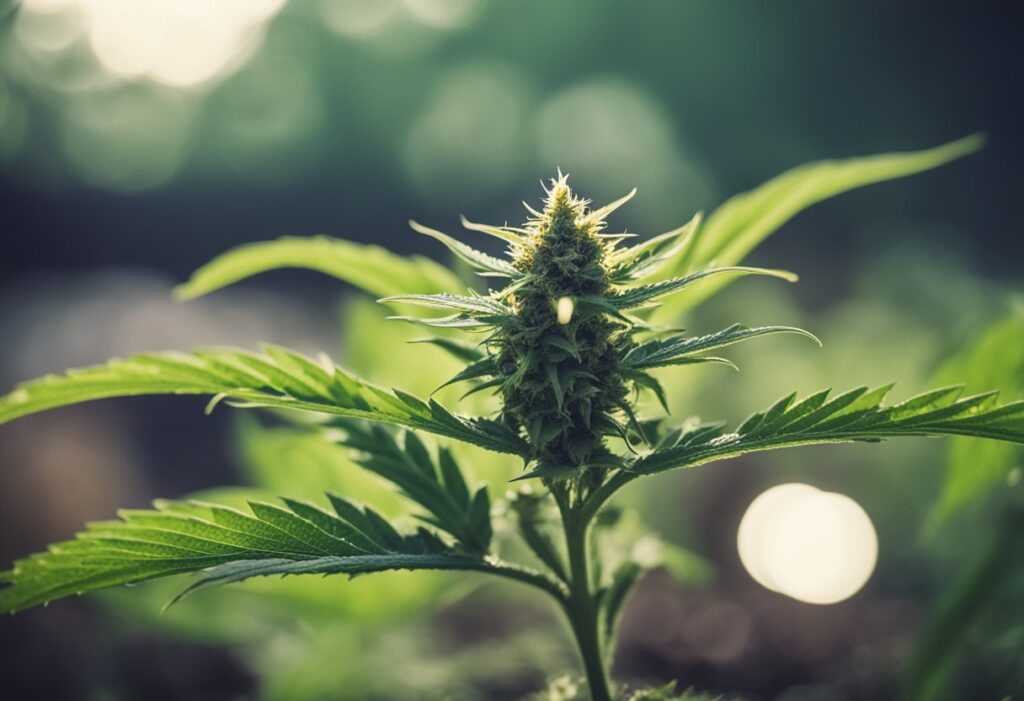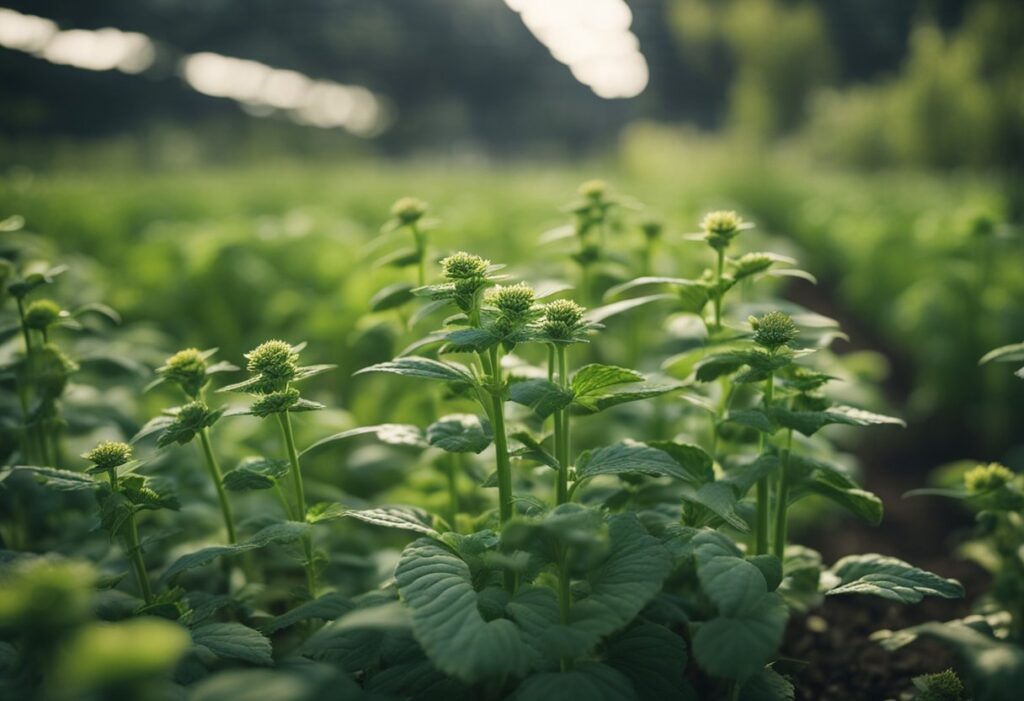
Bud rot is a challenge you must be aware of as a cannabis cultivator. Recognizing and addressing this problem early on is crucial to protecting your harvest.
Bud rot, or botrytis, is a type of fungus that thrives in environments with high humidity and inadequate airflow. The spores of this fungus can spread rapidly through your cannabis plants, given the right conditions. Here’s what contributes to the onset of bud rot:
Early detection of bud rot can be the difference between saving and losing your crops. Keep an eye out for these tell-tale signs:
Remember, by the time you see visible mold on the surface, the infection could already be widespread.
Understanding the lifecycle of botrytis cinerea helps you fight it effectively:
Interrupting this lifecycle is essential to managing and eliminating bud rot. Keeping your environment controlled with the right temperature and humidity, ensuring good air circulation, and regularly inspecting your plants are critical steps in prevention and management.

Mastery over the environment and careful cannabis plant care play crucial roles in preventing and controlling bud rot. With the right balance of humidity, temperature, and plant maintenance, you can maintain a healthy grow space.
Temperature and Humidity: To prevent bud rot, aim to keep your indoor grow room’s temperature between 68°F (20°C) and 78°F (25.5°C) during the day. At night, temperatures can dip slightly but should be kept above 65°F (18°C). Outdoor growers should be cautious during cool, rainy periods, as these conditions are prime for bud rot development. Monitor humidity levels diligently, keeping them between 40% and 50%.
Air Circulation and Ventilation: Ensure your grow space has a proper ventilation system with intake and exhaust fans to keep air moving. Positioning oscillating fans strategically within the grow room will prevent stagnant air around your plants and discourage mold growth.
Pruning and Training: Prune your cannabis plants to promote better airflow amongst the leaves and buds. Remove unnecessary foliage and space out the branches during the vegetative stage.
Plant Spacing: Proper spacing is essential for maintaining air circulation between plants. Overcrowding can trap moisture and create a habitat for bud rot.
Beneficial Microbes: Introduce beneficial microbes as a preventative measure to strengthen your plants’ defenses against bud rot.
Temperature Control: Use climate control systems to maintain consistent temperatures in your grow space to prevent the conditions that bud rot thrives in.
By keeping a watchful eye on these factors and responding promptly to any signs of excess humidity or poor air circulation, you can be more effective in preventing the spread of bud rot in your cannabis plants. Proper care and preventive measures are your best defense against this common cannabis affliction.

When tackling bud rot in your cannabis plants, timing and method are critical. Acting swiftly can save your crops and ensure the health of your remaining buds during the recovery process.
Once you detect bud rot, you must immediately remove the affected areas. Use clean, sharp scissors to cut out the infected bud, plus an additional margin of healthy tissue around it:
Consider applying neem oil as a preventive treatment for the unaffected areas, but be aware its effectiveness varies and it’s not a guaranteed fix.
If bud rot is widespread, you may need to harvest plants early to salvage what you can. When drying:
To strengthen your crops against future outbreaks:
Remember, prevention is just as important as the treatment when it comes to protecting your cannabis buds from the perils of bud rot.

When growing cannabis, understanding the specifics for both indoor and outdoor cultivation and selecting the right genetics are pivotal in preventing bud rot and maximizing your yields.
For indoor cultivation, managing the environment is key. You want to ensure your cannabis plants have the following:
Outdoor growers face different challenges, as controlling the environment is more challenging. To tilt the odds in your favor, consider these steps:
Selecting robust genetics from reliable sources such as Farmers Lab Seeds can make a significant difference. Look for these traits:
Remember that choosing the right seeds sets the foundation for a healthy crop less prone to diseases such as cannabis bud rot.

Cannabis bud rot, also known as botrytis cinerea, is a formidable fungal menace that targets your cannabis plants most significantly during their flowering stage. Understanding its lifecycle and how it interacts with cannabis cultivation methods can be pivotal in safeguarding your healthy plants from this disease.
Bud rot primarily affects cannabis during the flowering stage, a critical time when the colas—the large flower clusters—develop and mature. The infection starts when spores of the botrytis cinerea fungus land on the plant’s dense foliage, often facilitated by rain or high humidity levels that promote moisture buildup, especially within the colas. Infected areas typically manifest as brown or yellow patches on leaves and stems.
Bud rot should be differentiated from other types of mold and fungi, like powdery mildew, which presents as a white powder on leaves and stems. Unlike powdery mildew, bud rot affects the inside of buds, making it harder to detect early.
By staying vigilant and implementing robust cultivation practices, you can protect your cannabis plants from the destructive nature of bud rot and maintain a healthy growth environment.
To treat bud rot, you need to act quickly to minimize damage. Remove affected buds immediately and isolate the plant to avoid spreading spores.
Look for discoloration or a gray, moldy coating on your buds. These are early signs of bud rot and action should be taken before it progresses.
Once bud rot takes hold, it’s difficult to salvage affected parts. Remove and discard the contaminated buds to save the remainder of the plant.
Bud rot usually emits a musty, unpleasant odor. This smell indicates decay, which is a telltale sign of the presence of bud rot.
Maintain low humidity, ensure good air circulation, and monitor temperature closely to prevent the conditions bud rot thrives in.
Bud rot can spread rapidly if conditions are favorable for fungus growth. It’s imperative to address any signs of rot immediately to protect your plants.
We ship and deliver world wide via USPS and various couriers.
We offer a wide range of secure and anonymous online payment options.
We care about you, our customer. Please contact us with any questions or concerns.
Find out more about the benefits of being a loyal and regular customer.
WE ARE EVERY GROWERS ONE STOP SHOP TO ACQUIRE PREMIUM CANNABIS SEEDS FOR SALE IN THE USA, CANADA AND AUSTRALIA

Farmers Lab Seeds 2024, | All Right Reserved
Seeds are sold as novelty items, souvenirs, and collectibles. They contain 0% THC. We encourage our customers to check the legislation in their Country, State, Province, and Municipality prior to purchasing items from our store. We do not provide growing information.
All seeds are sold as hemp, and lab tested under 0.3% THC. This product is not for use by or sale to persons under the age of 21. This product should be used only as directed on the label. It should not be used if you are pregnant or nursing. Consult with a physician before use if you have a serious medical condition or use prescription medications. A Doctor’s advice should be sought before using this and any supplemental dietary product. All trademarks and copyrights are property of their respective owners and are not affiliated with nor do they endorse this product.
These statements have not been evaluated by the FDA. This product is not intended to diagnose, treat, cure or prevent any disease. Individual weight loss results will vary. By using this site, you agree to follow the Privacy Policy and all Terms & Conditions printed on this site. Void Where Prohibited by Law.